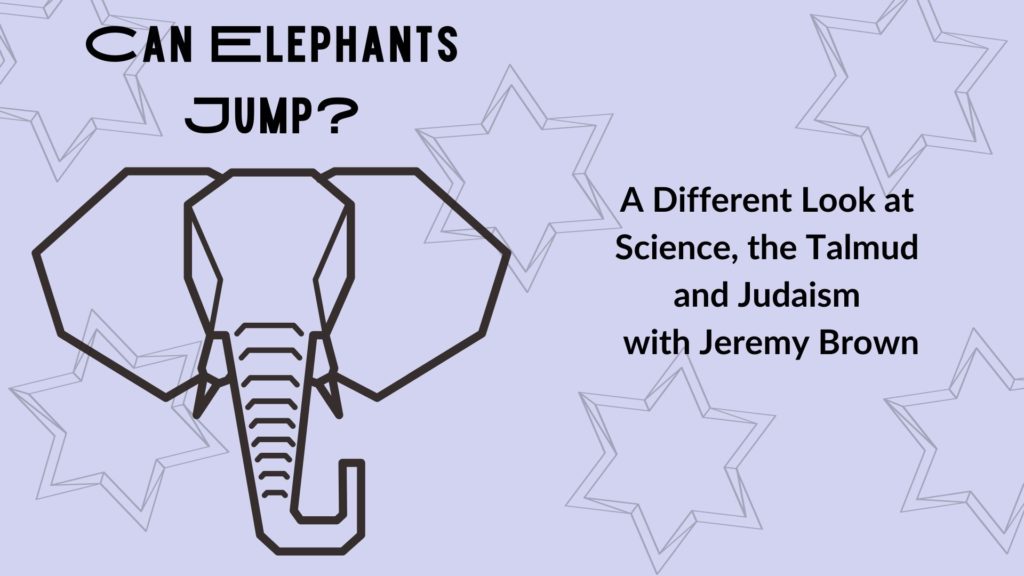A Brief Review of “Can Elephants Jump?: A Different Look at Science, the Talmud and Judaism”

Rafael Wirtschafter is interning (remotely) with Development and Marketing Manager Rachel Kassman. He will be blogging for JMM once a week and sharing his research and progress throughout the spring semester. To read past posts from JMM interns, click here.

On March 11, 2021 I attended a Zoom event at the Jewish Museum of Maryland called “Can Elephants Jump?: A Different Look at Science, the Talmud and Judaism” with Dr. Jeremy Brown, an emergency physician, Talmud blogger, author of New Heavens and a New Earth: The Jewish Reception of Copernican Thought, and the Director of the Office of Emergency Care Research at the National Institutes of Health.

You can actually watch the recording of this program yourself here!
It was a really interesting event. It began with an overview on how various authors have viewed the relationship between science and religion then went on to discuss a few examples of science in the Talmud. The Talmud contains a description of a scientific experiment involving ants. The Talmud also includes a story in which a rabbi is aware of Haley’s Comet, making him the first in recorded history. Another rabbi was the first to understand the relationship between obesity and puberty in boys. His findings were confirmed for the first time in a study published in 2010.
Of course Rabbinic tradition hasn’t always been consistent with science. For example, the Talmud asks how to lift an elephant for the purposes of the ritual of selling things. One medieval commentator (who had never seen an elephant in his life) suggests making an elephant jump. Unfortunately, elephants cannot jump. If that’s all you wanted to know from this review, there’s your answer.
On a few important matters, science and the Talmud have disagreed. Questions like “how are twins made?” and “does the Sun revolve around the Earth or vice versa?” In cases like these, while many religious people (including the great Rabbi Lord Jonathan Sacks, zt”l) have been very comfortable with accepting the scientific answer over the Biblical or Talmudic answer. This is not always the case. From early on in the scientific age, some rabbis and religious Jews (including the great Rav Kook) have argued that science changes all the time while Judaism, using ancient methods deriving truth from God’s word, does not.
In Modern society, we often hear the tale of the battle between the darkness of religion (usually Christianity) and the light of science, and how science ultimately slew her foe and came to triumph over the world. This is of course not the only way to tell the story of how the Modern world came to be, nor does it have to be the relationship between religion and science. Dr. Jeremy Brown’s talk gives a wonderful introduction to a wide array of perspectives not often considered in this great debate.
